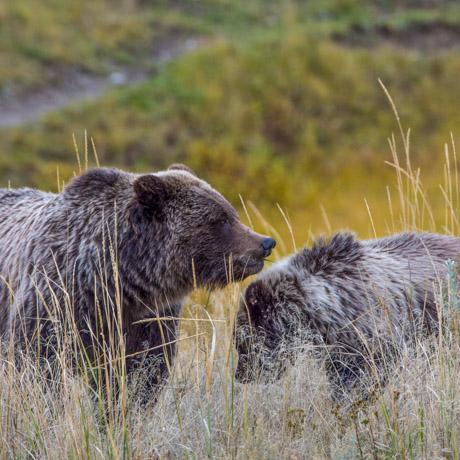Autumn Wildlife Watching
September 17 - 20
Gardiner, Montana
No
Sam Archibald, M.E.M.
18+
Field Seminars
Welcome to Yellowstone's Northern Range! This iconic stretch of mountains, meadows, rivers, and glacial valleys lies at the heart of the greater Yellowstone Ecosystem and is home to 14 carnivores, 8 ungulates, over 150 birds, as well as rodents, reptiles, and more. Autumn casts this landscape in a beautiful light with golden aspen, amber grasses, and crisp foggy mornings. Cooler days mean more active wildlife. Elk herd their harems, wolves wander farther in search of food at a time when prey species are in peak physical condition, and bears frantically feast in preparation for winter. You will seek out as many of these species as possible over the course of three days, starting early to catch animals when they are most active and using binoculars or high-powered spotting scopes to observe their unaltered behavior. In the afternoons, you will leave the road for short hikes (up to 5 miles) to examine tracks, scat, and other sign.
A tentative itinerary is included below, but the bulk of the program can be adapted to your shared interests. You will seek a better understanding of how these species interact with one another, and the management concerns that surround many of our more controversial or threatened species. Open discussion is always encouraged, so bring your questions, concerns, and even personal experiences with you as you explore one of the most intact and diverse ecosystems on the planet.
About the Instructor
Sam Archibald is a Lead Field Educator for Yellowstone Forever. Sam first started with outdoor education as a US Peace Corps volunteer, working with an Ecuadorian nonprofit organization to develop outdoor leadership programs for youth. After earning his master’s degree in Environmental Management through Western Colorado University (Gunnison, CO), Sam joined the National Park Service, working as a Crew Leader for the Yellowstone Youth Conservation Corps. What was supposed to be a single season in YNP turned into many as Sam fell in love the vivacity of this ecosystem. Sam first joined Yellowstone Forever's team as a winter seasonal educator and has been a permeant instructor since 2022. Sam is grateful for every day he gets to spend out in the Greater Yellowstone Ecosystem and looks forward to the continual discoveries offered by this wild and wonderful landscape.

